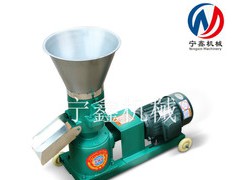近期的一项试验表明评估饲料中酶活性的重要性,强调了木聚糖酶性能特性方面的差异。
该肉鸡试验开展于波兰的一所大学,评估了三种不同小麦型基础日粮中木聚糖酶的活性。三种日粮制粒前的调质温度分别为80?C、85?C、 90?C,其它所有特性均相同。结果表明调质温度对酶活力有显着影响,仅有一种木聚糖酶活性保持稳定。
确保饲料稳定性
AB Vista公司的全球技术总监Dr Hadden Graham指出,注意酶活性的潜在差异及检测实际水平是确保饲料稳定性的关键。饲料配方的成功越来越依靠于所添加酶的性能优势。因此,掌握检测酶活的方法是质量保证程序中一个重要部分。这项研究表明,我们不能简单地添加木聚糖酶并且假定其具备预想的效果,尤其是当制粒温度较高时。
稳定的酶活性
试验中两种较高调质温度日粮降低了其中木聚糖酶活性, 导致在试验35天时降低肉鸡消化道内食糜粘度失败,最终导致生长性能的下降。试验发现仅有Econase木聚糖酶在制粒过程中保持了活性稳定。另外,这种酶在不同调质温度制定日粮,对试验鸡0-35天的体增重、饲料效率的影响均保持一致。这个试验表明分析饲料中酶活性的重要性,尤其是调质温度发生改变时。也表明饲料中酶的选择是决定动物生长性能原一个关键因素。
附原文:
In-feed enzyme activity: analyse it!
A recent study has demonstrated the importance of assessing in-feed enzyme activity, highlighting a variation in performance characteristics of xylanases.
The study, a broiler trial conducted at a Polish University, assessed the thermostability of three different commercial xylanases applied to wheat-based diets, processed at three different conditioning temperatures (80, 85 and 90?C
) prior to pelleting. The results showed that conditioning temperature had a significant impact on enzyme activity, with only one of the xylanase enzymes sustaining a consistent effect across the temperature range.
Ensuring feed consistency
AB Vista's Global Technical Director, Dr Hadden Graham, says that being aware of the potential for variation in enzyme activity – and testing for it – is critical to ensuring feed consistency. “The success of feed formulations increasingly depends on performance benefits delivered by enzymes, so having the ability to test feed for enzyme activity is an important part of quality assurance procedures. ”This study demonstrates that we can't simply add xylanase and assume it's having the expected effect, particularly at the higher pelleting temperatures in common commercial use.
Consistent enzyme performance
The two products that lost activity at higher processing temperatures were subsequently unable to sufficiently reduce digesta viscosity in broilers at 35 days, and this was linked to a reduction in animal performance. The study found that only Econase XT maintained consistent enzyme performance across processing temperatures. In addition, this enzyme maintained a consistent 0-35 day body weight corrected feed conversion ratio at each temperature. “This trial shows the importance of analysing in-feed enzyme activity, particularly because temperatures can vary even within a feed mill, between targets and actuals. The results also demonstrate why enzyme selection can play a key role in animal performance,” Dr Graham says.


















